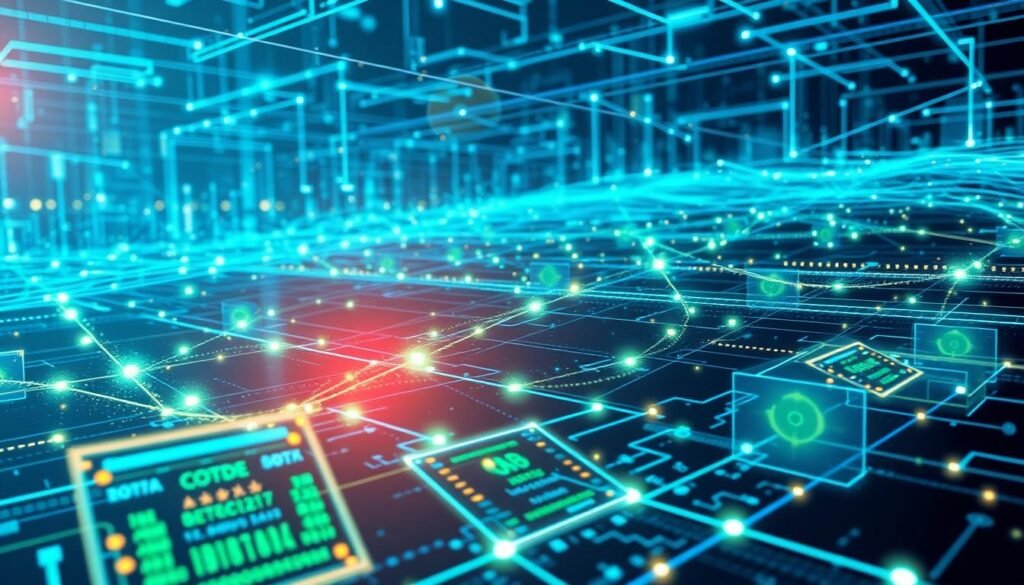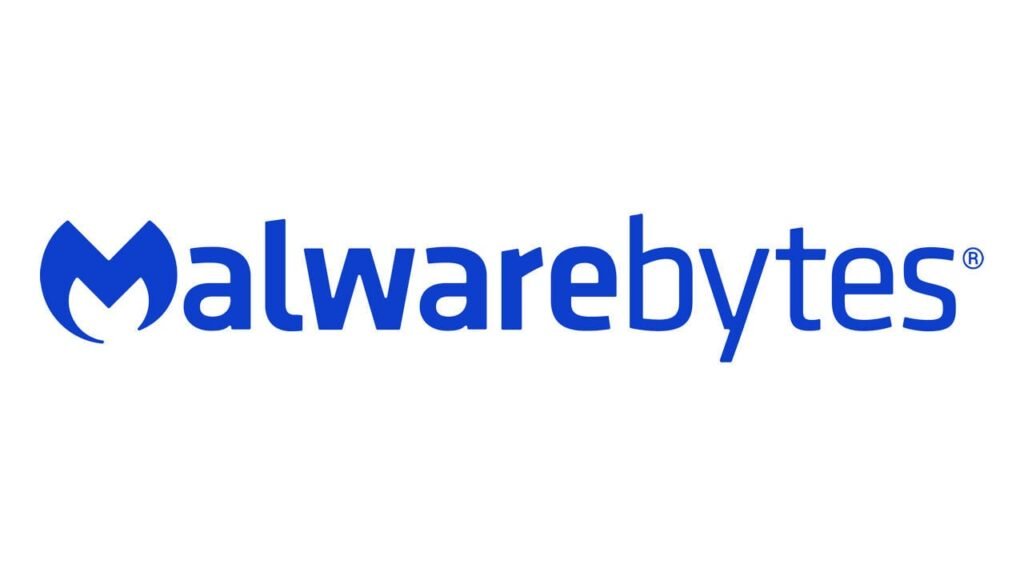Did you know the first computer virus, Creeper, was created in 1971? This marks the start of a long journey in cybersecurity. It has moved from simple antivirus to advanced AI solutions for today's digital world1. As the internet grew, so did new threats, making security measures evolve constantly.
Business leaders, CIOs, and CEOs must keep up with these changes. They need to invest in new technologies to protect their assets well.
At first, antivirus programs like Reaper focused on known threats. But with more malware, we now use behavioral analysis and AI1. This shift shows we're adapting fast to the changing cyber world.
It's key to understand these changes to keep our defenses strong. This way, we can all stay safe online. The next parts of this article will explore more about these changes in Cybersecurity.
Key Takeaways
- • The journey of cybersecurity began in the early 1980s with the rise of computer viruses.
- • AI-driven solutions are revolutionizing how we understand and combat cyber threats.
- • Behavioral analysis has become a critical tool in identifying potential threats.
- • The shift from traditional antivirus solutions to advanced security systems is essential for effective protection.
- • Investment in cybersecurity technologies is crucial for safeguarding business assets in today's digital landscape.
The Beginning of Cybersecurity: The Age of Computer Viruses
The history of cybersecurity beginnings starts with key events. In 1971, the first virus, Creeper, was made. This led to the Reaper antivirus program23. The 1980s saw more personal computers, leading to a need for antivirus solutions.
In 1987, McAfee Associates launched the first commercial antivirus software. This was a big step in fighting digital threats24.
Later, the Morris Worm in 1988 showed the internet's weaknesses and caused big problems4. As the internet grew, so did the threats from computer viruses. The polymorphic virus in 1991 was especially hard to catch because it could change itself2.
Knowing about these early challenges helps us understand today's cybersecurity. The fast rise in malware threats pushed for better security. This led to the advanced tech we use now.
Antivirus Technology: The First Line of Defense
Antivirus technology is your key first line of defense against cyber threats. It started in 1987 with the first antivirus products like Ultimate Virus Killer and VirusScan. These marked a big moment in malware detection techniques5. Back then, these tools mainly used signature-based detection to find and remove known viruses.
The 1990s were known as the “Virus Era” because of big malware outbreaks like I LOVE YOU and Melissa. These attacks hit tens of millions of computers, showing how big the threat was5. Antivirus software then got better, using new methods like heuristic analysis to keep up with threats. This made malware detection better and helped fight off more complex attacks.
The world of cybercrime keeps changing. Hackers attack computers every 39 seconds, making antivirus solutions very important5. With 350,000 new malware instances every day, we need better antivirus tech more than ever6. Next-generation antivirus uses AI and machine learning to fight threats, with about 99% success rate. Old methods only work about 60% of the time6.
From Basic Solutions to Advanced Security Systems
The move from basic to advanced security systems has changed how companies protect their digital stuff. At first, defenses were simple, like firewalls and antivirus. But now, they've grown to keep up with smarter cyber threats. Stateful inspection firewalls and IDS systems have made networks safer, showing a big step up in security7.
UTM systems came next, combining many security features into one. This gave companies a complete view of their cybersecurity, something they didn't have before7.
Next, NGFWs were developed, using deep packet inspection and advanced threat protection. This made it easier to spot and stop threats7. Then, EDR solutions came along, using AI and machine learning to fight off new cyber threats better than old antivirus could8.
Now, the focus is on being proactive, using zero-trust models and constant monitoring. This helps stop unauthorized access79. AI is key in this new world of cybersecurity, helping to quickly find and deal with threats. Companies should invest in AI-powered security systems to stay ahead of cyber threats.
Understanding Computer Viruses and Their Impact
Computer viruses are a big part of the changing cyber threat world. They affect both people and businesses a lot. Viruses copy themselves and spread fast, causing big problems like losing data and unauthorized access.
Studies by Rem Dudas and Bar Matalon looked into AI-made malware. They tested it on Windows, macOS, and Linux10. This AI can act like real threats, making cyber attacks even scarier10.

Polymorphic malware is another big threat. It changes and hides itself, making it hard to find10. Experts say we need better ways to spot these threats. AI can help find threats faster and prevent big cyber attacks11.
The first virus, Creeper, was made by Bob Thomas in 197112. It showed how dangerous malware can be. John McAfee created the first antivirus in the 1980s, helping fight these threats12. Now, with threats changing fast, companies must keep up with cybersecurity and use AI to protect themselves.
| Virus Type | Characteristics | Detection Challenges |
|---|---|---|
| Polymorphic Malware | Mutates, encrypts, obfuscates | Increased difficulty in detection |
| Ransomware | Encrypts files and demands payment | High variability in attack methods |
| Worms | Self-replicates across networks | Requires continuous monitoring |
| File Infector | Attaches itself to executable files | Often overlooked in initial scans |
Limitations of Traditional Antivirus Solutions
Traditional antivirus solutions are crucial in fighting malware. Yet, they often leave systems open to security threats. These programs mainly use signature-based detection, which works well for known malware but fails against new threats and advanced attacks1314. Cybercriminals use advanced techniques to avoid detection, making it hard for these systems to keep up13.
Moreover, antivirus software can slow down systems, causing performance issues. This is because it can be resource-heavy and doesn't always protect against modern threats13. Companies often lack the skills to handle these threats, leading to a growing need for Managed Detection and Response (MDR) services14. It's clear that traditional antivirus solutions alone are not enough.
In table format, here are some of the key limitations associated with traditional antivirus solutions:
| Limitation | Description |
|---|---|
| Signature-based Detection | Effective for known malware but fails to detect zero-day threats. |
| Resource Heavy | Can slow down user systems while not providing enough protection. |
| Lack of Behavioral Analysis | Struggles to identify advanced malware that changes behavior. |
| Inadequate Expertise | Organizations often lack the knowledge to handle advanced threats. |
The cybersecurity world is moving towards more proactive measures. Endpoint detection and response (EDR) solutions are key in this shift. They offer continuous monitoring and advanced threat detection, improving security13. Using AI tools to analyze data and detect anomalies also helps overcome the weaknesses of traditional antivirus programs1314.
Behavioral Analysis: A Step Towards Smarter Security
Behavioral analysis is changing how we protect against cyber threats. It moves away from old methods to a new, active approach. This method watches for odd behaviors in processes to spot suspicious activities.
By using these smarter security solutions, companies can catch threats early. This stops problems before they start.
Studies show that over 90% of companies use AI in their security efforts15. AI helps by quickly analyzing lots of data. This lets it find odd patterns that might mean a security issue.
This quick action is key because cybercrime is getting worse. It's expected to cost over $10 trillion by 202516. This shows how fast and strong our security needs to be.
AI can also help respond to threats faster. This means less damage and more time for experts to tackle tough problems. Even so, only 42% of businesses are sure their teams can spot threats15.
By learning from how people act, these systems make security better. They also make using technology easier and more enjoyable.

The Evolution of Cybersecurity: From Antivirus to AI-Driven Solutions
Cybersecurity has changed a lot, moving from simple antivirus to advanced AI solutions. This change has been marked by important milestones. These show how technology has grown and how cyber threats have become more complex. Now, using artificial intelligence is key to dealing with these threats.
Key Milestones in Cybersecurity Development
Over the years, cybersecurity has made big steps forward. At first, systems relied on rules to fight known threats but struggled with new ones17. Machine learning came next, making detection better with labeled data. Then, unsupervised and semi-supervised learning helped find new threats by looking at data patterns17.
Deep learning came after, using neural networks to handle huge amounts of data. It could spot both old and new malware17.
Increasing Complexity of Cyber Threats
New cyber threats have made old methods less effective. Polymorphic malware and changing attacks need new defenses. AI solutions can learn and predict threats, keeping up with new dangers.
AI is now key in fighting payment fraud, identity theft, and phishing. It helps protect customer data in banking and e-commerce18. Efforts like the Global Partnership for Artificial Intelligence and the EU's AI Act focus on using AI responsibly18.
The Rise of Network Security with Firewalls and IDS
Network security has grown a lot, thanks to firewalls and intrusion detection systems (IDS). In the late 1980s, firewalls started as a main defense in cybersecurity. The first one, called the “Packet Filter,” was made by Digital Equipment Corporation19. These early systems used packet filtering, starting a new era in network protection.
As network traffic got more complex, better firewalls were created. By the early 1990s, stateful inspection firewalls came out. They tracked active connections and made decisions based on the connection's state19. Commercial options like Check Point's FireWall-1 were big steps forward in this technology19.
In the late 1990s and early 2000s, IDS systems became popular. They watched network traffic and alerted admins of possible threats20. This change moved from just preventing threats to also detecting and responding to them.
As data grew, SIEM systems became key. They managed and analyzed security alerts, helping understand threats and respond quickly20. With more data in the cloud, tools like IAM and CASB were created to handle distributed assets20.
Firewalls and IDS together have made network security stronger. These technologies keep evolving to help fight modern cybersecurity threats.
| Year | Technology | Key Features |
|---|---|---|
| Late 1980s | Firewalls | Packet filtering |
| Early 1990s | Stateful Inspection Firewalls | Tracks active connections, enhances security |
| Mid-1990s | Application Proxy Firewalls | Deep packet inspection, granular access control |
| Late 1990s | Intrusion Detection Systems (IDS) | Monitoring network traffic for threats |
Advanced Cyber Threats and the Need for Proactive Defense
In today's fast-changing threat landscape, companies face more advanced cyber threats. These include ransomware, malware, and socially engineered attacks. Recent data shows that 75% of security experts have seen more cyberattacks this year. Most of these, 85%, are caused by generative AI technologies21.
This rise in attacks highlights the need for proactive defense strategies. These strategies help protect against potential threats.
AI-powered security solutions are key in boosting cybersecurity. They can cut breach costs by 80% and boost threat detection by 95%22. These systems use machine learning to analyze different types of data. This helps them spot anomalies early, reducing damage from attacks.
Companies should focus on using AI-driven automation. This approach cuts down response times and eases the workload for security teams. AI systems can also sort and prioritize security incidents, making resource allocation more efficient22. They help implement quick, autonomous containment strategies to lessen threat impacts.
The market for AI-powered cybersecurity tools is expected to grow to $135 billion by 2030. This shows AI's importance in cybersecurity is not just a trend but essential for staying ahead of cybercriminals21. By using adaptive security that updates protocols for new threats, you can strengthen your defense against the growing threat landscape.
| Statistic | Data Point |
|---|---|
| Breach Cost Reduction | 80% |
| Threat Detection Improvement | 95% |
| Cyberattacks Increase | 75% |
| Cyberattacks from Generative AI | 85% |
| Global AI Cybersecurity Market (2021) | US$15 Billion |
| Projected Market Growth (2030) | $135 Billion |
The Role of Artificial Intelligence in Cybersecurity
Artificial intelligence is changing how we protect against cyber threats. It uses predictive analysis to make security better. AI can spot patterns and threats that humans often miss23.
This section will cover predictive analysis, continuous improvement, and real-time threat detection. We'll see how AI helps in these areas.
Predictive Analysis and Continuous Improvement
AI is key in predictive analysis. It helps keep security measures up to date. By looking at lots of data, AI finds trends that show possible threats24.
This means organizations can act fast to protect themselves. AI also cuts down on false alarms24. It can block bad traffic and isolate risky devices23.
Real-Time Threat Detection and Mitigation
AI is great at finding threats as they happen. It uses machine learning to check security data all the time. This means constant protection against attacks23.
AI also helps security teams act fast when there's a problem. It quickly looks at data to help stop threats24.

Cloud-Based Security Solutions: A New Standard
In today's fast-changing world of cybersecurity, cloud-based solutions are key to protecting your business. They grow and change with your needs, keeping you safe from cyber threats. Real-time threat intelligence is a big reason for this shift. It scans global networks to spot and stop threats quickly.
For more on how cloud tech is changing cybersecurity, check out this article25.
Cloud security also sets a new standard for cybersecurity. It makes managing threats easier and keeps your security in check. Remember, most cyber attacks start from endpoint devices, so strong defenses are crucial25.
Using cloud strategies can greatly lower the risk of data breaches. Most breaches come from endpoint security weaknesses, showing the need for complete solutions25. As more people work remotely, cloud security helps protect against the bigger attack surfaces this creates.
| Advantage | Description |
|---|---|
| Scalability | Flexibly adapt security infrastructure as needed without extensive upfront investment. |
| Real-time Threat Intelligence | Global data analysis enables quicker detection and responses to cybersecurity threats. |
| Centralized Management | Simplifies security administration and enhances visibility across organizational networks. |
| Adaptive Security Posture | Prioritize protecting endpoints effectively, addressing vulnerabilities that can lead to breaches. |
Cloud-based security is not just a trend; it's the new standard for keeping your business safe. By using these technologies, you can strengthen your security and protect against new digital threats.
Conclusion
The world of cybersecurity has changed a lot over time. It started with simple machines like the Enigma machine. Now, we have advanced AI solutions to fight cybercrime. This shows how important it is to keep up with new threats in our digital world2627.
Today, AI helps detect and stop cyber threats fast. It looks at lots of data to find and fix problems quickly27. It's key for companies to use the latest tech and teach their teams about security to stay safe.
The future of keeping our digital world safe will mix AI with old security methods. This way, we can protect our online stuff better. Knowing how cybersecurity has grown helps us get ready for the challenges ahead26.




